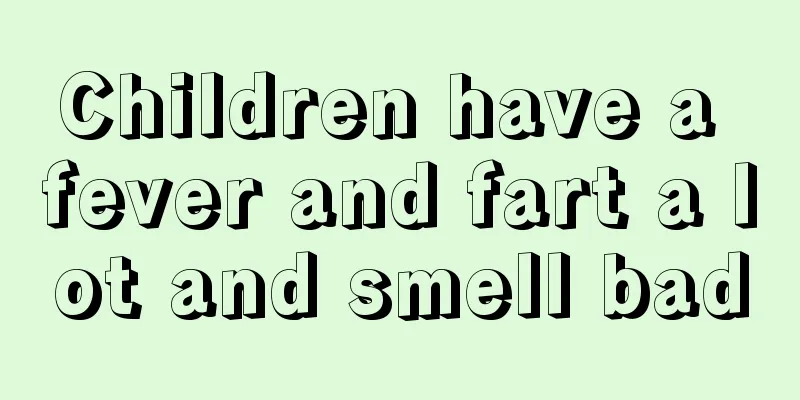Children have a fever and fart a lot and smell bad

|
Many children will feel that they fart a lot and it smells very bad when they have a fever. This is actually a symptom caused by a lot of toxins accumulated in their bodies. At this time, they should expel some of the toxins accumulated in their bodies so that the condition can improve faster. Generally, it is caused by bacterial infection. 1. Continued fever refers to a body temperature that is constantly maintained at a high level of 39-40°C or above for several days or weeks, and the temperature fluctuation range within 24 hours does not exceed 1°C. It is common in lobar pneumonia, typhus and the high fever period of typhoid fever. 2. Remittent fever is also called septicemic fever. The body temperature is often above 39°C, with large fluctuations, exceeding 2°C within 24 hours, but is always above normal levels. Common in sepsis, rheumatic fever, severe pulmonary tuberculosis and suppurative inflammation, etc. 3. Intermittent fever: The body temperature rises suddenly to a peak and lasts for several hours, then quickly drops to normal levels. The afebrile period (intermittent period) can last from 1 day to several days. In this way, high fever and afebrile periods alternate repeatedly. Common in malaria, acute pyelonephritis, etc. 4. Undulant fever: The body temperature gradually rises to 39°C or above, then gradually drops to normal levels after a few days, then gradually rises again after a few days, and repeats this process many times. Common in brucellosis. 5. Recurrent fever: The body temperature rises sharply to 39°C or above, persists for several days and then suddenly drops to normal levels. The high fever period and the fever-free period last for several days and then alternate regularly. It can be seen in Hodgkin's disease, etc. 6. Irregular fever: The temperature curve of fever has no certain regularity, which can be seen in tuberculosis, rheumatic fever, bronchopneumonia, exudative pleurisy, etc. Different febrile diseases have corresponding fever types, which help in the diagnosis and differential diagnosis of the cause of fever. But it must be noted that: ① Due to the widespread use of antibiotics, infections are controlled in a timely manner, or due to the use of antipyretics or glucocorticoids, the characteristic fever patterns of certain diseases may become atypical or irregular; ②The fever type is also related to the strength of the individual's reaction. For example, in the elderly with shock-type pneumonia, they may only have a low fever or no fever, and do not have the typical fever type of pneumonia. |
<<: What are the dangers of enema for children with fever?
>>: Will children have fever when they grow up?
Recommend
Symptoms of viral fever in children
It is very common to catch a cold and a fever whe...
Why does a child have a runny nose?
Children's immunity is not as strong as adult...
Newborn baby care methods
After the baby is born, many parents, as they are...
Five physical methods of reducing fever in children without side effects
It is a common phenomenon for children to have a ...
Thumb tenosynovitis in children
Tenosynovitis is a relatively common disease, and...
How long can a newborn baby use bath gel
Parents usually feel distressed when bathing thei...
What causes hiccups in infants and young children?
The baby's body is very fragile, so once the ...
A three-year-old baby has sheep dung in his feces?
Everyone knows that babies' body resistance i...
What are the developmental indicators of thirteen-month-old babies?
When the baby is 13 months old, many parents pay ...
When is the best time for children to grow taller?
Watching their children grow taller is one of the...
How many months does it take for a newborn baby to have teeth?
At what month is the latest for a newborn baby to...
Nursing diagnosis of jaundice
Most newborn babies will suffer from jaundice a f...
What is going on with a three and a half year old baby wetting the bed?
It is a common symptom for babies to wet the bed ...
What medicine should babies take for laryngitis
Many babies have very low resistance due to their...
Why does a child cry when he dreams while sleeping?
Many children suddenly cry when they are sleeping...









